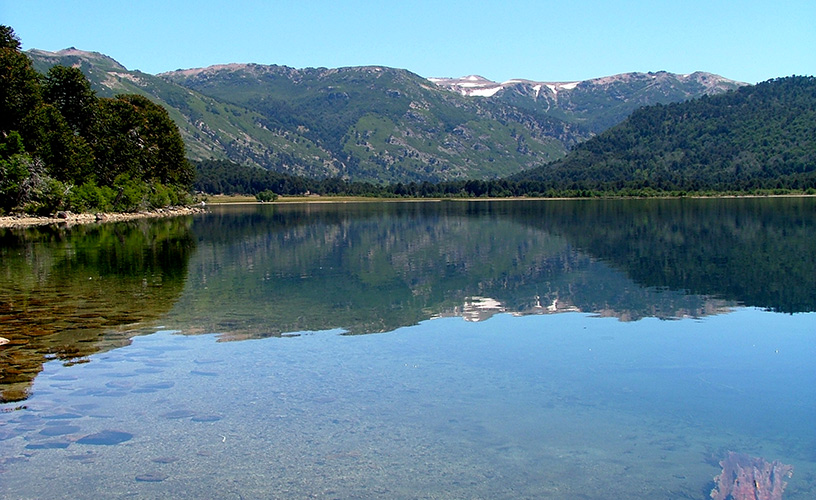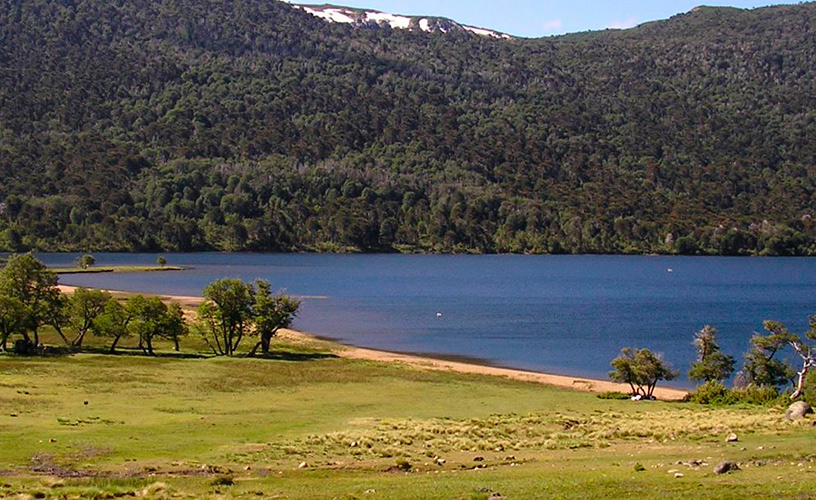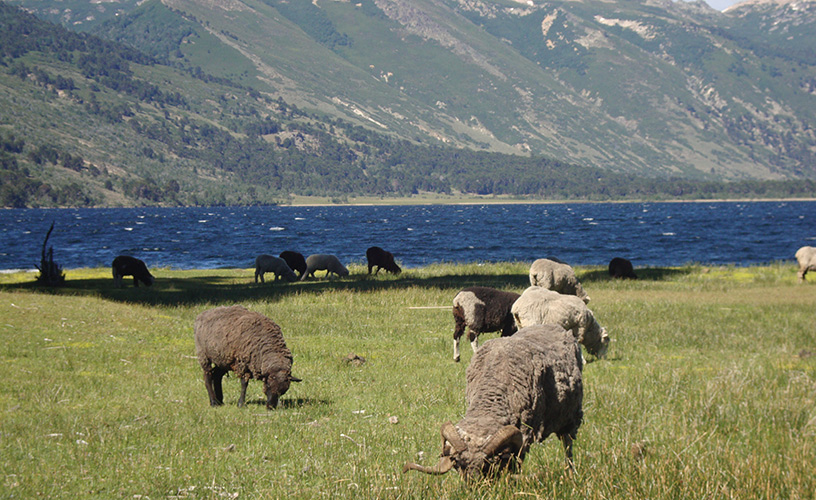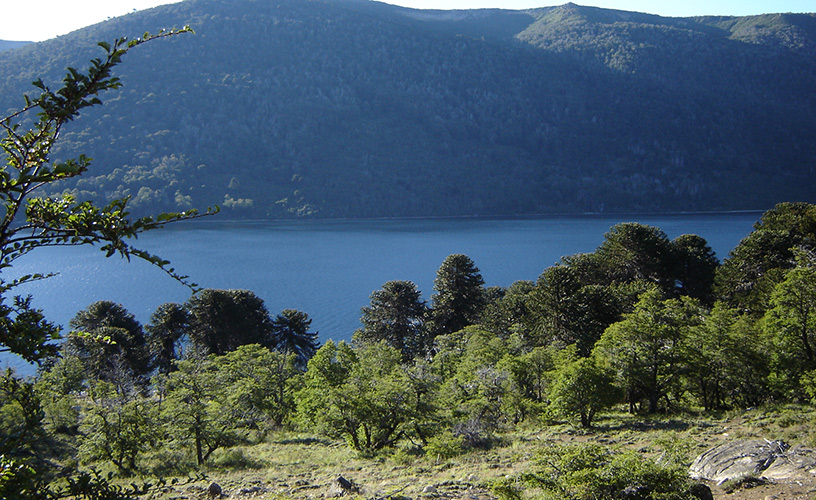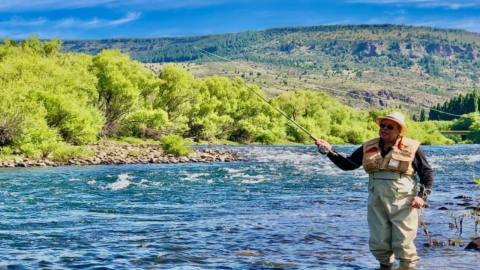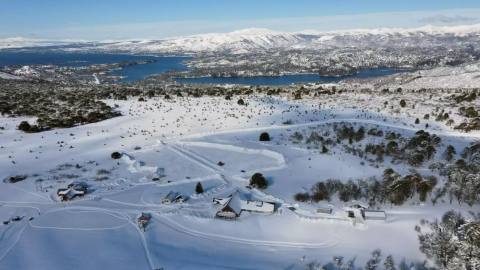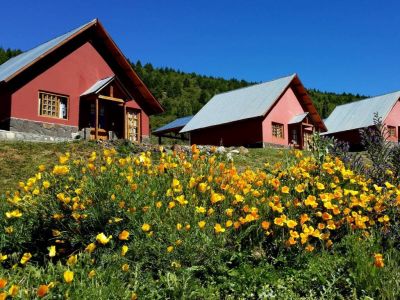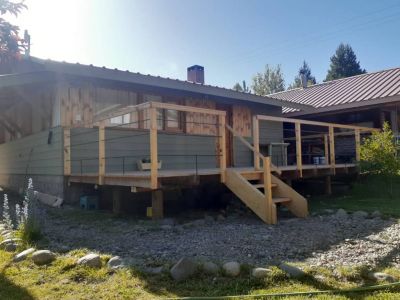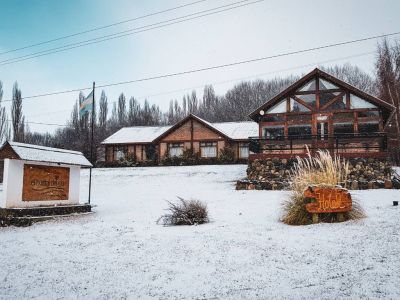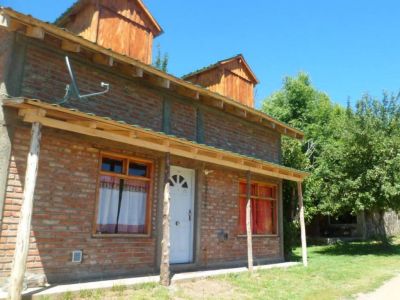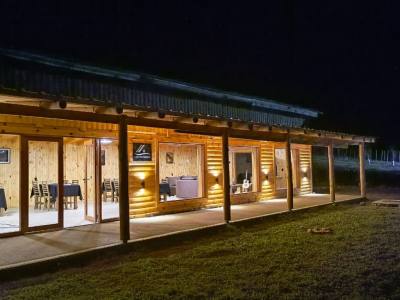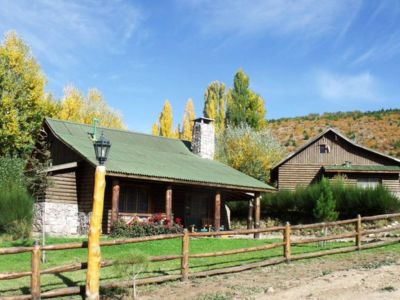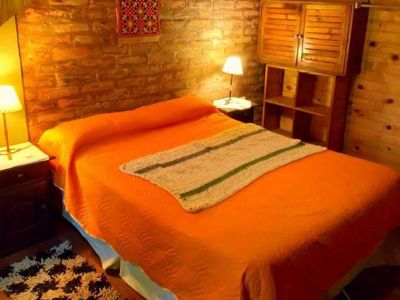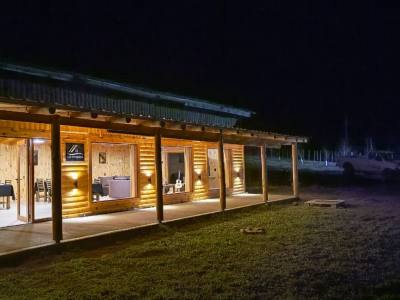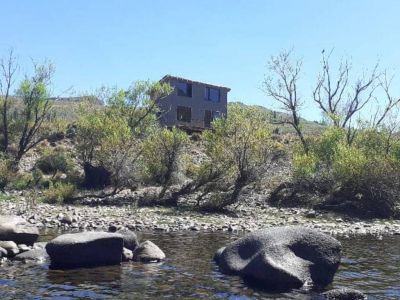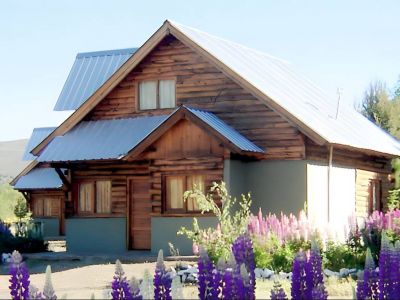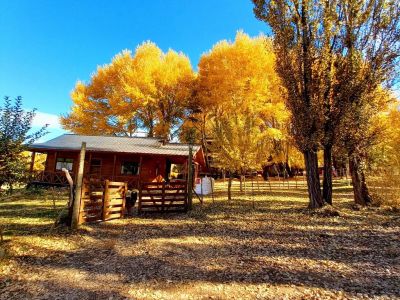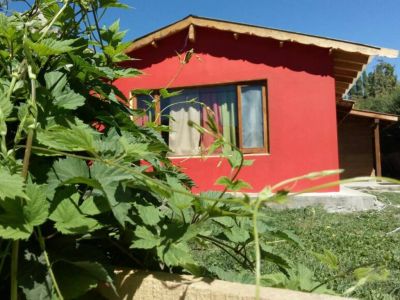Lake Ruca Choroi
The Mapuche communities, keepers of tradition, are an added attraction along the way.
Ruca Choroi is Mapudungun, Mapuche language, for "parakeet house". Learning this and seeing the almost virgin natural surroundings of the lake enticed us to drive the few kilometers separating it from Aluminé. We stopped at two small ponds to take some photographs and get a feel of the incredible landscape populated by flamingo colonies, black-necked swans and a wide range of ducks, all thriving in an area free of permanent settlers. Further ahead, entering Poi Pucón and Carri Lil we noticed wooden buildings and farm tools. It was the settlement of the Salazar and Aigo Mapuche communities who have been in the area since the beginning of the twentieth century. Their livelihood is based on a combination of raising goats, sheep and fowls, growing vegetable gardens and selling woven goods and crafts. An Ancestral Ceremony "The Nguillatún is one of the religious ceremonies we still celebrate in our community when families pray to Nguenechen for prosperity, rain and good pastures," a lady who sold woven goods proudly explained to us. During our conversation we also learned how Mapuches use the piñon, the nut-like, edible seeds of the monkey puzzle. It is their staple food, used in stews, pasties and even ground and used like flour. In the area there is a primary school, a health post and a third community closer to the lake. Although the youth of these communities has, in the last decades, been under the influence of the way of life in the cities, they haven’t lost their traditions. Together, they constitute one of the largest Mapuche settlements in the Province of Neuquén.
We then entered Lanín National Park where monkey puzzles became even more abundant. We stopped by the park warden’s for information and he directed us to the back country camping site. Sheltered by the hills, we found tables, camp-fires and bathrooms surrounded by dense, bright green vegetation as a result of the annual rainfall. Hundred-year-old monkey puzzles share the land with Antarctic beech and other native flora and fauna. Finally, the lake and its narrow beaches of thick sand lay before us. Although it is not big, it is good for spinning and fly casting as motor boats are banned. ‘Let’s see who wins!’ our children challenged us as they threw stones at the big rocks. As we lay on the beach to relax for a while, we noticed many trails leading to secluded corners. The chatter of parakeets in the jumbled vegetation was our farewell song to Lake Ruca Choroi.
Mónica Pons
Secretaría de Turismo de Aluminé
